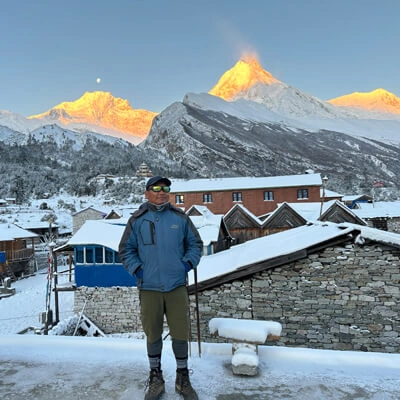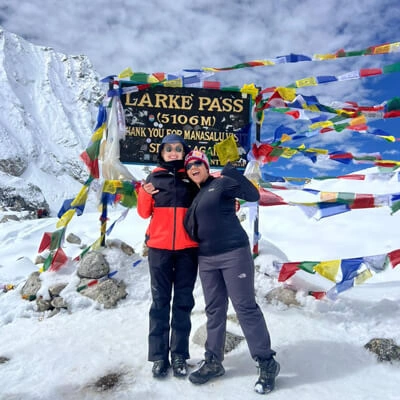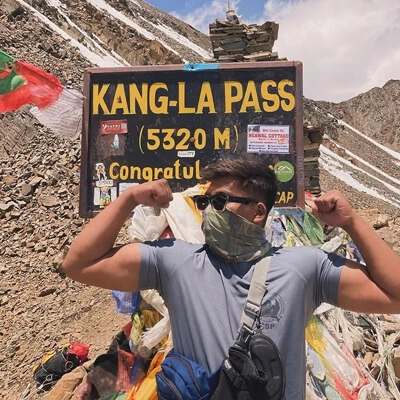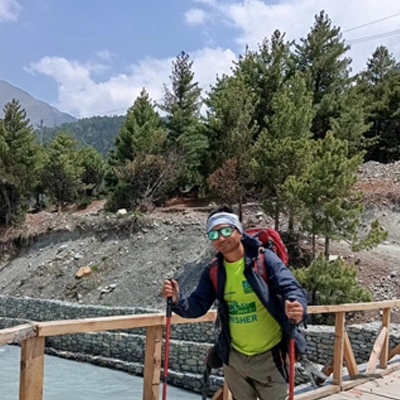The Tsum Valley Trek could be an alternate short trekking track in Nepal due to road access to the Machhakhola. Trekkers impeded this area's functionality because it was late. Recognizing the business potential throughout this region, the Nepalese government opened it to tourists. The Tsum Valley trek locale is rich in cultural heritage, and we will see a blended pack of Chortens, Gumbas, and Mani dividers every single day through this trek.
Tsum Valley is the hidden gem of the Himalayas, with a mix of Tibetan and Nepalese lifestyles. People here are conserving Tibetan culture and following Buddhism.
The locals called this valley "Bhiu Kimuling." "Bhiu" means hidden place, and "Lung" means valley. If you go by words, 'Ki' means dog, and 'mo' means female. According to the ancestors, "At first dogs arrived in the Tsum Valley from Tibet. People are followed by dogs. Subsequently, the settlement was established here. Thereafter, people called this place 'Tsum.'.
What does 'Tsum' mean?
The dogs initially led the people to the location. The few people here would tell others to keep quiet after they found the place. That's what tsum means. Khaptsum. 'Khap' means mouth, and tsum means to be quiet.
In the south, the giant mountains Ganesh Himal and Siring Himal in the north protect the Tsum Valley. Normally, Nepal leases most of the mountain in the north.
To start, the abominable figure, or "Yeti," has been seen all through this remote land The Tsum Valley is home to a voyage track as an eventual outcome of the acknowledgment that the magnificent Buddhist Guru Milarepa had once reflected inside the mountain surroundings of this valley. Throughout this trek, we often have the opportunity to visit the highly popular Tatopani hot springs simultaneously. We acknowledge that the water from the previously mentioned springs cures any positive hypersensitivities associated with our skin. We jointly offer the hot springs during the Tsum Valley trek. Tsum Valley is acknowledged to be one of Buddhism's sacred concealed valleys, and in and of itself, this trekking holds crucial later houses between remote villages.
For numerous years, individuals there have relied on subsistence agribusiness, touching swarms of yaks, and exchange with Tibet. The routes twist past the square, chortens, and stores of hand-sliced stones with Buddhist prayers and depictions of deities. Individuals still cultivate grain and tend to their yaks. Nowadays, there is road access further than Arughat Bazaar, which goes to the Dobhan private Jeep. But the regular buses go only to Machhakhola. So, the Tsum Valley Homestay Trek starts from Machhakhola after a long drive from Kathmandu and follows the Budhi Gandaki River (Yashodhara Nadi) through Tatopani, Dhovan, Jagat, Phipim, Lokpa, Chumling, Chhekamparo, Rachen Gumpa, Chhule (settlement nearby water), and Nile (sunny place) and back the same way to Khorlabesi, then heads to the historic villages Barpak and Laprak via Singla Pass. This trip can take a minimum of 11 days just to visit the Mu Gumpa (3,700 m), but you can extend it four weeks to the Manaslu Circuit, which crosses over the mighty Larkya La Pass (5,160 m), or you may visit a less touristic area, Gumba Lungdang (3,200 m), and Ganesh Himal Base Camp at an elevation of 4,800 m within 14 days as part of Tsum Valley. We at Nepal Mother House recommend you do not miss the Gumba Lungdang and Ganesh Himal Base Camps during your Tsum Valley trek. If you have a longer holiday, then you can extend your trip to the Manaslu Circuit from 18 to 26 days.
People's culture and traditions are still untouched by the modern world. They are following the cultivation and livestock methods of their ancestors. As a unique custom and culture of Tsum Valley, there are still some real testimonials from people who practice the polyandry marriage system. Due to the absence of high passes, one can undertake this trip even in the winter season. The highest point of the Tsum Valley Trip is Mu Gumba, at an elevation of 3,700 meters. But mid-September, October, and November in autumn and mid-March, April, and May in spring are the best times for this trip.
Because the Tsum Valley Trek is located in a restricted area, it requires a minimum of two people in a group, arranged through a government-registered trekking agency and accompanied by a professional guide. However, as we are a local trekking agency based in Gorkha, we are also capable of organizing a solo trip, obtaining a group join permit, and conducting your own private trek. Come and join Nepal Mother House for the excellent services in Tsum Valley, as we believe that client satisfaction holds immense meaning for us. With our experienced and qualified trekking team, we ensure you have a wonderful experience and a holiday to remember for the rest of your lifetime.
Accommodation is available in the Tsum Valley.
The Tsum Valley Trek includes overnight stays in lodges and teahouses. Lodges are available at a lower elevation. On the upper part of the trail, you will mostly see teahouses. Rooms with twin-sharing beds and a common washroom are usually available. If you like, we can arrange a single room, but the price can be expensive. Single rooms are not always available. The rooms are comfortable enough to spend a night or two.
Similarly, the teahouse/lodge serves meals according to its menu. Typical Nepali and Tibetan dishes make up the menu. You might also get a few other cuisines, like Indian and Continental. We reserve rooms in tourist-standard hotels in Kathmandu, equipped with attached washrooms and modern facilities.
However, Mugumba provides a shelter, and Gumba Lunging is an unforgettable experience.
Visit the Main Attraction of Tsum Valley
There are so many things to explore on the Tsum Valley Manaslu Trek. The trail includes beautiful villages where you can see the lifestyle and culture of the locals from the Nyingma, Kagyu, and Sakya sects. Likewise, you get to see exotic alpine vegetation and wildlife like blue sheep, goral, Himalayan tahr, snow leopards, etc.
The trail passes through numerous monasteries, chortens, stupas, and prayer flags. You will visit nunneries like Rachen Gumba, Dephyundonma, and Gumba Lunndang. You will also explore the oldest monastery in the region, Mu Gompa. The region also has lakes like Khungyu Lake and Yamdro Lake.
Gumba Lunndang is one of the best places to observe the mountains, including three out of the seven peaks of the Ganesh Himal Range: Ganesh Himal I (7,422 m), Ganesh Himal II (7,118 m), and Ganesh Himal IV (7,140 m). Locals call the Ganesh Himal range "Yangra." Likewise, other mountains, like Nadi Chuli (7,871 m) and Himalchuli (7,331 m), can be seen from Gumaba Lungdang. During the Tsum Valley trek, you will visit the Milarepa Cave monastery at Lamagaun, the footprint of Guru Milarepa (1052–1135), and most of the hidden treasures of the Manaslu Region.
Tsum Valley Trek Cost Estimate
The Manaslu Trek withTsum Valley depends on the service you want during the trek. We do have an offer price for our Short Tsum Valley itinerary that you can see in the top section of the page. However, if you want to make any changes to the itinerary or the services, then the price may differ. Many things are included and not covered in the package cost, as you can see in our cost includes and excludes section. The package cost does not include items such as travel insurance, flight tickets, tips, and personal expenses. The cost of the Tsum Valley Trek is also less if you book in advance for autumn (September, October, and November) 2026 and spring (March, April, and May) 2026. Take advantage of our special offer for 2026, 2027.
Here is a complete guide to the Manaslu Circuit with the Tsum Valley Trek; kindly go through the link for more information.

















